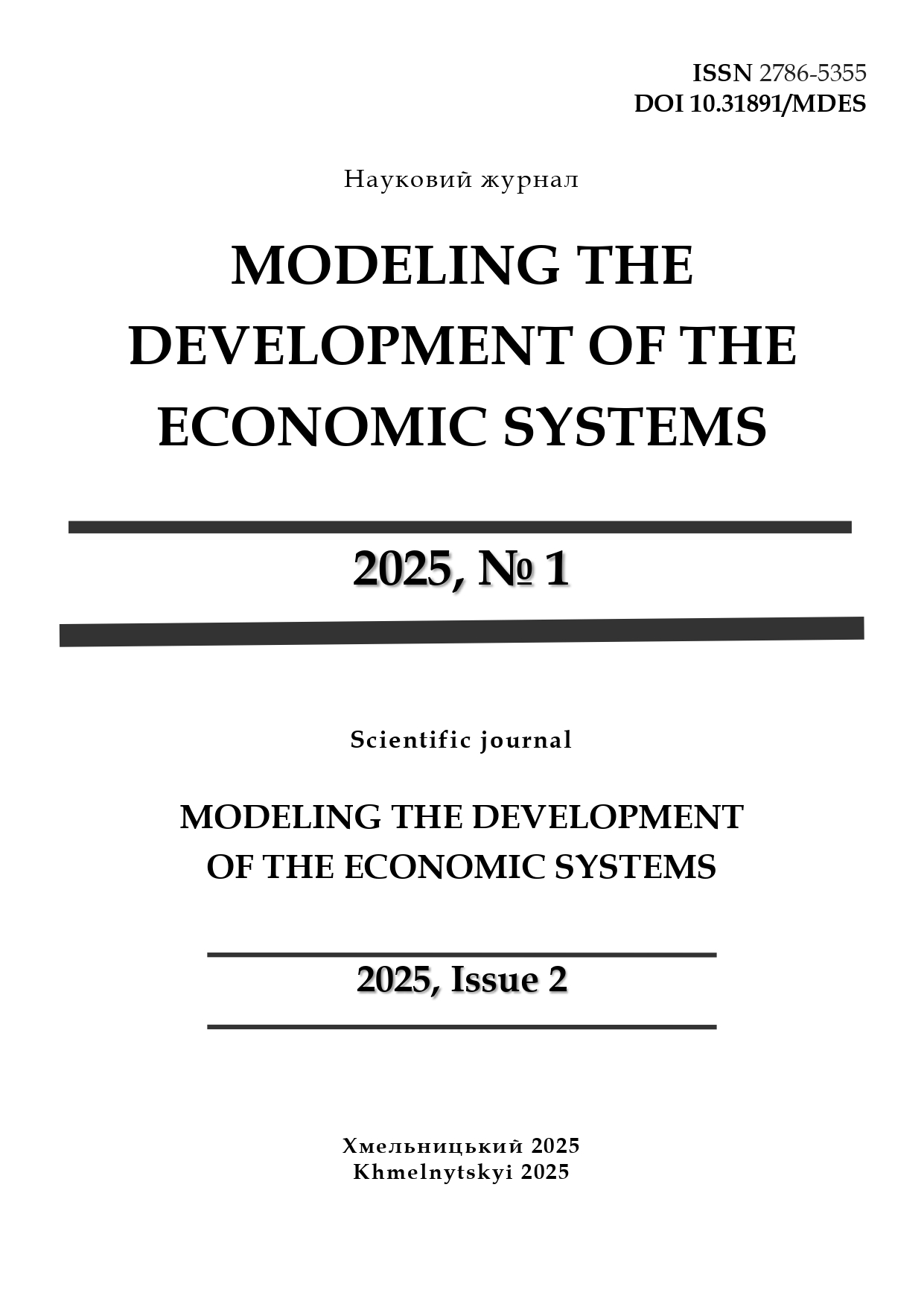METHODOLOGICAL TOOLS FOR THE STRATEGIC IMPLEMENTATION OF CIRCULAR AND BLUE ECONOMY PRINCIPLES IN MANAGING THE DEVELOPMENT OF UKRAINE’S VITICULTURE AND WINEMAKING SECTOR IN THE CONTEXT OF GLOBALIZATION
DOI:
https://doi.org/10.31891/mdes/2025-16-28Keywords:
strategic management, globalization, sector, mechanism, viticulture and winemaking complex, regulation, competitiveness, instrument, framework, circular economy, export, wine, agricultural industry, blue economy, post-war recoveryAbstract
The article proposes approaches to overcoming challenges that necessitate the implementation of innovative conceptsтsuch as the circular and blue economy, to ensure the sectoral competitiveness, environmental sustainability, and development of Ukraine’s viticulture and winemaking industry. It has been demonstrated that these approaches will enable the creation of a systemic methodological toolkit aimed at strategic management, considering the principles of resource efficiency. It is emphasized that introducing a circular approach to winemaking reduces the sector's environmental impact by lowering emissions and minimizing the need for new raw materials. Special attention is given to the assertion that transitioning from a linear to a circular model in the viticulture and winemaking complex is a foundation for sustainable strategic development, allowing for waste minimization and optimal use of available resources. The proposed model for the sector justifies the implementation of a set of resource-efficiency measures, including efficient water use, energy efficiency, and the use of renewable energy sources, optimization of material and packaging use. In the context of the circular economy, it is crucial to highlight the integration of renewable energy and circular business models into the planning of winery operations. Many enterprises worldwide are transforming into agri-biotechnological complexes that produce wine and generate a portion of the necessary resources internally. Implementing Environmental Management Systems and corresponding certifications at the enterprise level indicates that a winery is systematically monitoring and improving its environmental performance. The presence of a certified EMS may be regarded as a reliable indicator of effective environmental management. Studies of Italian wineries reveal that approximately 69% of enterprises have already implemented formal environmental management systems; however, greater attention to ecological aspects is still required in many cases. For strategic governance of the sector, it is essential to monitor the share of enterprises adopting such systems and to assess how this affects reductions in resource consumption and pollution. In addition to ISO 14001, there are industry-specific sustainability programs in winemaking, with participation as an indicator of producers’ alignment with sustainable development principles. Monitoring the number of certified wineries and the extent to which standards are met allows for evaluating the effectiveness of governmental and sectoral programs. The circular approach enables the closing of production loops, minimizes waste, and derives additional value from by-products, enhancing the profitability of winemaking enterprises. Blue economy bio-innovations integrate natural processes such as pest biocontrol and waste bioconversion into production, thereby reducing chemical and energy costs while enhancing the image of environmentally responsible products. Improved resource efficiency reduces operational costs and increases the competitiveness of Ukrainian wine in terms of production cost. To implement these principles effectively, it is necessary to apply the developed methodological toolkit proposed in this study, which includes practical recommendations for viticulturists and winemakers on introducing circular technologies, adopting sustainability standards, and using appropriate indicators to monitor progress under significant external challenges.
Downloads
Published
How to Cite
Issue
Section
License
Copyright (c) 2025 Наталія ВДОВЕНКО, Юрій ЛОПАТИНСЬКИЙ, Ганна САРКІСЯН

This work is licensed under a Creative Commons Attribution 4.0 International License.




